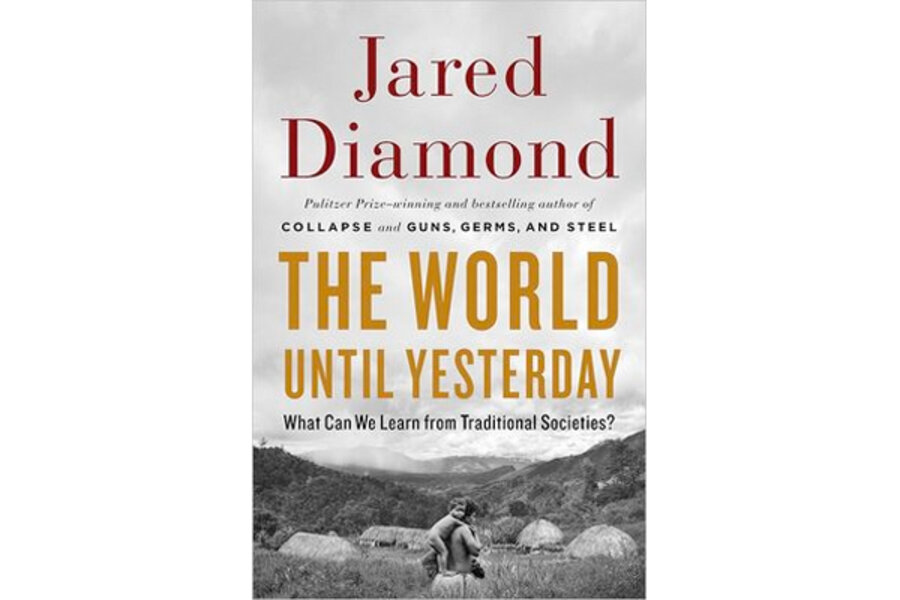The World Until Yesterday
Loading...
The book world is blessed with big-picture thinkers who have earned the “genius” label. Jared Diamond, a geography professor at the University of California at Los Angeles, is one of them.
Many of those geniuses make no effort to write books for general audiences. But fortunately for us, Diamond does not fit that mold. The World Until Yesterday: What Can We Learn from Traditional Societies? is the newest in a line of impressive works from Diamond, all easily accessible to general readers.
The best-known of Diamond’s books is “Guns, Germs, and Steel: The Fates of Human Societies,” partly because it won the Pulitzer Prize, and partly because its hypothesis is stated clearly and captures the imagination. In this book Diamond posited that human societies evolved at different rates with different degrees of success depending on where they were located. Other prominent Diamond books include “The Third Chimpanzee: The Evolution and Future of the Human Animal”; “Why Is Sex Fun?: The Evolution of Human Sexuality”; and “Collapse: How Societies Choose to Fail or Succeed.”
It is never wise to oversimplify the worldviews of geniuses, but here I go anyway: To some degree, geography is destiny. Humans, obviously, need adequate food to thrive. But, as Diamond explains, “surprisingly few wild plant and animal species are suitable for domestication to become crops and livestock. Those few wild species were concentrated in only about a dozen small areas of the world, whose human societies consequently enjoyed a decisive head start in developing food production, food surpluses, expanding populations, advanced technology, and state government.”
The differences explain what we now call European dominance: Europeans settled around the Fertile Crescent, home to “the most valuable domesticable wild plant and animal species.” Aboriginal tribes on the large island of Australia, on the other hand, “inhabit areas with few domesticable wild plant and animal species.”
Thus, the “traditional societies” in Diamond’s book are neither backward nor inferior. Rather, they live – or until recently have lived – much as individuals lived throughout the ages. The European (and North American) industrialized way of life is so recent that it is merely a tiny blip on the timeline.
To demonstrate what moderns like me (and maybe you) can learn from traditional societies, Diamond relies heavily on his vast knowledge of New Guinea, located on a huge island north of Australia.
Until the 1930s, residents of the island resided in small groups, did not operate with a written language, did not attend schools, did not use money to purchase goods, and had almost no contact with the outside world. Diamond began his research visits there about 50 years ago. Eventually he became a familiar figure and learned at least one of the island languages. He eventually found much common ground with the New Guineans, and today, he writes, he and island residents can “hold long conversations, laugh at the same jokes, share interests in children and sex and food and sports, and find ourselves angry, frightened, grief stricken, relieved, and exultant together.”
It would be a mistake, however, to assume that people are basically the same everywhere, Diamond says: “[M]any of my New Guinea friends count differently (by visual mapping rather than by abstract numbers), select their wives or husbands differently, treat their parents and their children differently, view danger differently, and have a different concept of friendship.”
Three cheers for those differences, Diamond has concluded. They are what makes traditional societies intriguing. They also make “The World Until Yesterday” a fascinating and valuable look at what the rest of us have to learn from – and perhaps offer to – our more traditional kin.
Steve Weinberg is the author of eight nonfiction books. He has read all of Diamond’s books, but says he still isn’t a genius.








